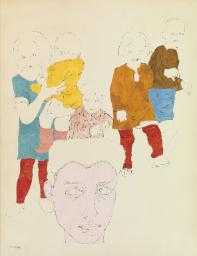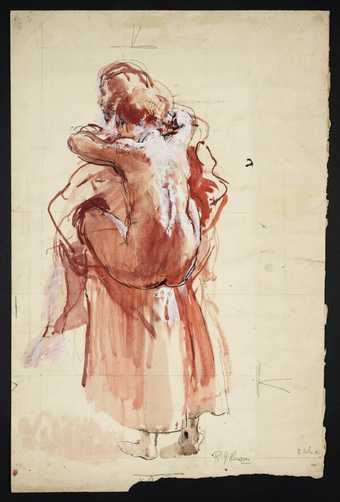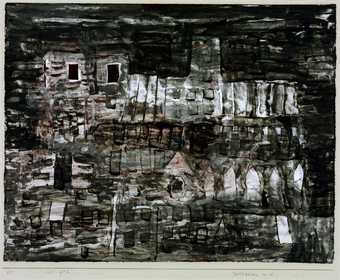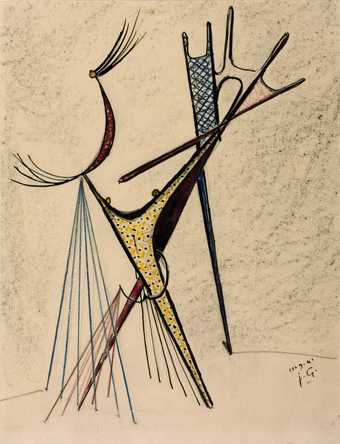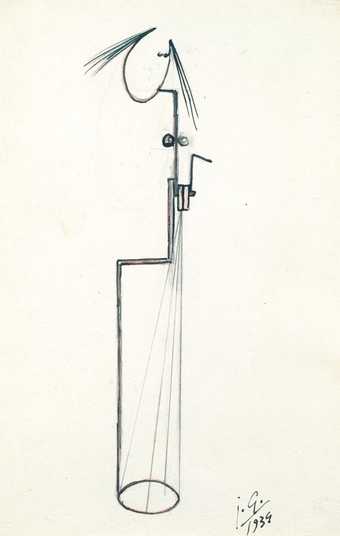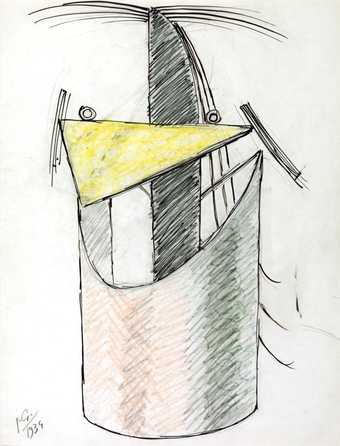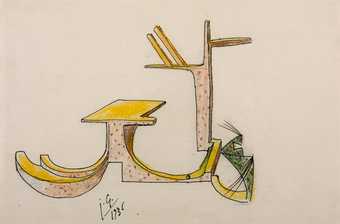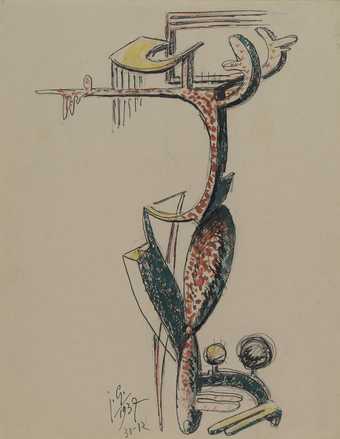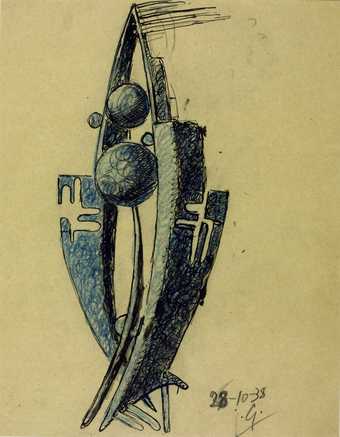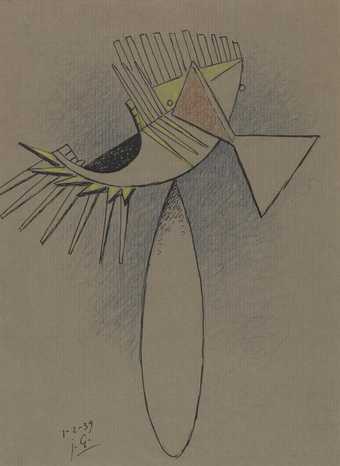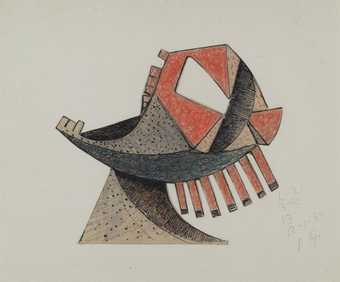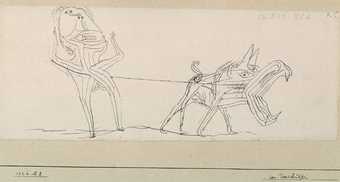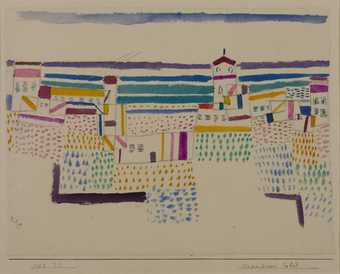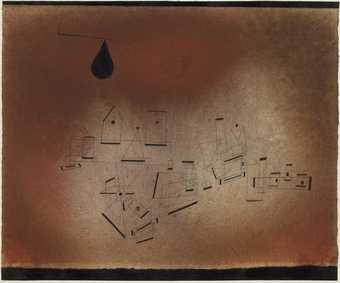
In Tate Liverpool
- Artist
- Paul Klee 1879–1940
- Original title
- Belastete Kinder
- Medium
- Graphite, crayon and ink on paper on board
- Dimensions
- Support: 650 × 458 mm
- Collection
- Tate
- Acquisition
- Bequeathed by Elly Kahnweiler 1991 to form part of the gift of Gustav and Elly Kahnweiler, accessioned 1994
- Reference
- T06796
Summary
Paul Klee worked on small scale, creating microcosmic worlds in drawings, watercolours and oils. Frequently creations of the imagination and often childlike in their apparent simplicity and directness, his pictures were nonetheless rooted in acute observations of the natural world, human behaviour and an appreciation of the small, unremarked incidents of everyday life.
Klee’s appointment in 1921 as a teacher at the Bauhaus in Weimar introduced a new phase in his art. He began to formulate a more theoretical approach, giving his art a rational basis as a counterweight to the power of intuition. His pedagogical notebooks formed the basis of lectures and of several essays he wrote in the early 1920s, in which he explored the fundamental components of his creative process: line, tone-value and colour. However, Klee still believed that theory was but a means to an end.
Burdened Children illustrates the manner in which Klee elaborated elements of these fundamental principles. ‘I begin where all pictorial form begins: with a point that sets itself in motion.’ (Quoted in Spiller 1961, p.24.) This drawing demonstrates the movement from a point to a line, which in turn creates planar forms. It consists of an almost unbroken line that forms a series of round-cornered, interlocking boxes. Klee then added stick legs and eyes to give the shapes a human character. It was unusual for Klee to have given the two figures such heavy outlines, a feature chiefly associated with his work in the later 1930s. However, the heavy black might have been one reason for giving the drawing its title. Klee clearly found something unusual in this composition, because he made five different variants in different media. Of these, the closest in compositional elements to this work is Twins, 1930 (present location unknown), although Klee filled the inner planes of the figures with a combination of shading, hatching and dots.
Further reading
Jürg Spiller (ed.), Paul Klee: The Thinking Eye. The Notebooks of Paul Klee, London 1961
Agnès de La Baumelle, ‘Paul Klee’, in Die Sammlung Kahnweiler: Von Gris, Braque, Léger und Klee bis Picasso, exhibition catalogue, Kunstmuseum im Ehrenhof, Düsseldorf 1994, pp.158-61
Sean Rainbird, ‘Paul Klee’, in Jennifer Mundy (ed.), Cubism and its Legacy: The Gift of Gustav and Elly Kahnweiler, exhibition catalogue, Tate Modern, London 2004, pp.50-1, 54, reproduced p.55 in colour
Sean Rainbird
December 2003
Revised by Giorgia Bottinelli
June 2004
Does this text contain inaccurate information or language that you feel we should improve or change? We would like to hear from you.
Display caption
These two works show Klee’s great imaginative and technical versatility. In The Castle of Mountain S, the mysterious castle seems to have emerged from the artist’s process of heavily working the paint. The freer process of ‘taking a line for a walk’ animates Burdened Children showing the spontaneity that Klee associated with childhood.
Gallery label, April 2008
Does this text contain inaccurate information or language that you feel we should improve or change? We would like to hear from you.
Explore
- abstraction(8,615)
-
- from recognisable sources(3,634)
-
- figure(2,270)
- actions: postures and motions(9,111)
-
- walking(607)
- carrying / holding(866)
- child(1,324)
You might like
-
Andy Warhol A Field of Blue Children
1951–2 -
Rodney J. Burn The Pick-a-Back
c.1925 -
Paul Klee The Castle Mountain of S.
1930 -
Julio González Aerial Figure
1941 -
Julio González Study for ‘Maternity’
1934 -
Julio González Imaginary Face
1934 -
Julio González Reclining Figure with a Large Hand
1936 -
Julio González Fantastic Figure
1937 -
Julio González Figure with Balls, known as ‘Severe’
1938 -
Julio González Head with a Long Neck
1939 -
Julio González Shrieking Head, called ‘The Shriek’
1939 -
Paul Klee The Protector
1926 -
Paul Klee Seaside Resort in the South of France
1927 -
Paul Klee Historical Site
1927

